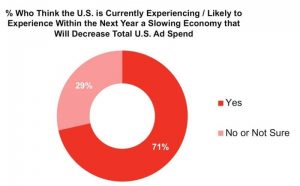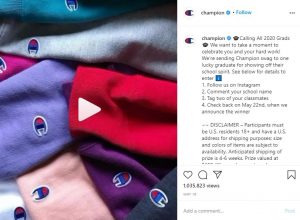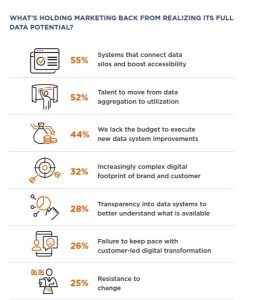— June 21, 2017

Humans rely on their network to make decisions about where to go, what to do, and what to buy. 92% of consumers trust referrals from people they know, and 77% of consumers are more likely to buy a new product when learning about it from friends or family. According to Wharton marketing professor Jonah Berger, author of the bestseller Contagious, word-of-mouth is 10 times as effective as traditional advertising.
You might be fooled into thinking that word-of-mouth is simple to generate, but it isn’t. Creating a buzz-worthy message that goes viral is not an easy task and, unfortunately, there is no clear-cut formula (much to the dismay of marketers). So, how do you turn customers into brand advocates? How do you fuel conversations that make people want to share your message with their network?
1. Exceed your customers’ expectations
According to Entrepreneur, “businesses should be focusing on creating customer service that transforms customers into fans who can’t stop talking about your brand.” But it goes even beyond excellent customer service. Word-of-mouth is triggered when a customer experiences something far beyond what was expected. Hence, you need to delight and please your customers with their entire experience. It’s important to remember that this is not so much about gifts and promotions, but about how you treat and communicate with the people who drive your business growth.
How can you, then, improve the customer experience as a whole? One example is when Colorado’s Vail Resorts created a mobile app that connected skiers with their networks on the mountain. Dupped EpicMix, the app allowed guests at any of the Vail’s five resorts to capture their performance and share it with others on social media. With RFID technology embedded into season passes and lift tickets, riders were able to learn where and when they skied, and how far they traveled. Riders were motivated and challenged to push themselves while sharing their achievements with their friends and family. After going live in December 2012, 100,000 guests at the resort were using the app, generating more than 35 million social impressions. With the use of mobile technology, Vail Resorts managed to exceed their customers’ expectations of their stay at the resort, leading to an immediate influx in word-of-mouth.
2. Create the WOW factor
The Missouri Business Development Program states that: “All successful small businesses seem to have an edge. They have found a way to distinguish themselves, to rise above the commercial fray, to put the WOW into their business.” It’s not enough to offer a quality product or service. You need to surprise and delight your customer, not simply satisfy them. How do you do this? By incorporating a WOW factor. Transform a satisfactory experience into a special and memorable experience. For example, if you run a Bed & Breakfast, you can go that extra mile by providing your guests with a handwritten note and a local bottle of wine in their room.
One of my personal “wow experiences” was after a trip to the vet’s office. The doctor and nurse took the time to thoroughly explain why my dog might not be feeling well and gave her the necessary medication. While I was already very pleased with my visit, the doctor personally called me the next day to check up on my dog. She answered my remaining questions and told me to call back anytime. I was left thinking “wow!” I also went straight to Yelp and left them a glowing review. The conclusion: you want your customers to say “wow”, because “wowed” clients are loyal clients and will tell others about their experience.
3. Make it easy for people to leave reviews
When running a word-of-mouth campaign, the worst thing you can do is make it difficult for customers to communicate with each other about your brand. So, make it as easy as possible for people to leave reviews and recommendations. Make sure you turn on your reviews on your Facebook page. This has to be done manually, before anyone can leave star-reviews. Similar, you should set up your Google My Business and Yelp account, if you haven’t done so yet. Also, allow customers to give feedback directly to you on your website, as you’ll learn a lot from this. For example, 3M ESPE, a manufacturer of dental products, made its review process so simple that the company increased customer review volume by 200 percent in three days.
4. Set goals for word of mouth
Just as with any other type of marketing strategy, goals like “getting everyone to talk about our product” are too vague to be effective. In your marketing plan, you will want to set certain objectives and measurable goals. For example: “We want X number of new customers through referrals per month”; “ We want to obtain press coverage in three X places per month”; “We want to generate X number of leads per month via word-of-mouth marketing.” Every goal should have time limits and detailed methods for accomplishment.
5. Promote your business through PR
Public relations is a way to keep your business in the public eye. As a small business, develop relationships with local journalists, newspapers, radio stations and online influencers in your niche. Keep them informed about your company’s latest developments and future plans.
Take it up a notch by organizing something that will create a real buzz with the local media. For example, an interesting trend in the restaurant industry has been the rise of the “pop-up” restaurant. Pop-up restaurants are temporary restaurants hosted in a shared kitchen, giving customers and journalists a feeling of urgency and excitement surrounding the business. As Kabbage mentions: “Pop-up businesses also enable small business owners to test new concepts, bring products to local markets, try a wider variety of products, and connect with customers in a more personal and efficient way. All of these characteristics make pop-up businesses an ideal fit for local marketing.” Organizing these special stunts can really drive press coverage and, subsequently, word-of-mouth.
Generating word-of-mouth isn’t easy, but with a little strategic planning, a small business can create a real buzz in their local community. Don’t be afraid to think outside the box, you can achieve a lot with creativity even on a small budget. Word-of-mouth is the most powerful form of advertising a small business can have, as each happy customer can steer dozens of new ones their way.
Business & Finance Articles on Business 2 Community
(57)






